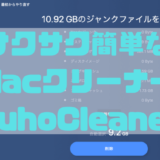

There are a few different examples of dynamic library paths in that example: If any of these fail to load because the path is invalid, the application will abort. This is the command to load a dynamic library at a particular path. We’re primarily interested in blocks with the LC_LOAD_DYLIB keyword. To view an executable’s or library’s dependencies, you can run this on the command line: It can be a frustrating and unexpected hurdle, but it isn’t too tricky to resolve on your own. In my (limited) experience, it’s common for the dynamic library location to be incorrect, especially if you are trying to bundle a library with your executable, rather than using one provided by the OS. And if that location is wrong, you get an error message like the one earlier. The executable loads each library in turn using the file path embedded inside the executable. Instead, the location of the dynamic library is actually embedded directly inside the executable. On Mac and Linux, the system doesn’t make assumptions about the locations of dynamic libraries when you try to load them.

In this situation, the other dynamic libraries must also be present, or you’ll get a similar error. It’s also possible for dynamic libraries to reference other dynamic libraries. This message indicates that the dynamic library loader failed to load a library referenced from the executable. In this case, the application will likely abort and provide some sort of error message:ĭyld: Library not loaded: libavcodec.dylib There’s a possibility that the executable will fail to find one or more libraries it needs to run. framework files, which you can think of as “fancy” dynamic libraries). You can spot dynamic libraries by their extensions. When you start the executable, it reviews its list of dynamic libraries and tries to load them.
#Ffmpeg mac m1 code
This is fine in some cases, but there can be legal and functional reasons that you do not want to include someone else’s code directly in your executable.ĭynamic libraries allow you to store compiled code in separate files that are loaded by your executable at runtime.

Options 1 and 2 result in the external code residing directly inside your executable, so it actually causes the executable’s size to increase.

Copy the source files directly into your own source code directory and compile them as part of your application.
#Ffmpeg mac m1 download
If you download someone else’s code and want to use it in your application, there are a few ways you could go about it: I was recently learning how Mac and Linux machines load dynamic libraries, so I thought I’d write a quick post about it. On Mac and Linux, however, the situation is different and requires some consideration. On Windows, when an executable needs a dynamic library, it searches for it in a few predefined locations, such as “the same directory as the executable”. In all these cases, the library is included as a “dynamic library” (as opposed to a “static library”). G-Engine uses various third-party libraries: ffmpeg for video playback, fmod for audio playback, zlib for decompression, etc.


 0 kommentar(er)
0 kommentar(er)
